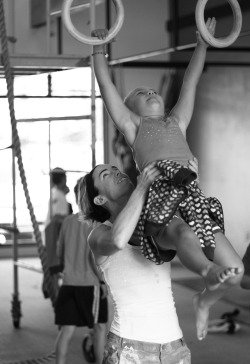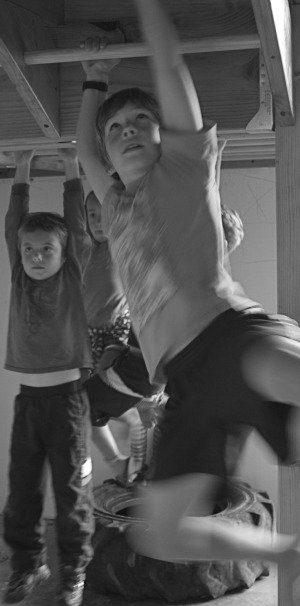CrossFit AllStar Kids Program
CrossFit Keiki
Aloha parents and families!
Coach Joslynne is keeping the fun going with CrossFit Kids every Saturday from 9:30am to 10:30am. START NOW to keep enrollment at a level that we can continue to keep this on our schedule!
Ages 7-12 (Younger kids might be considered—just contact Coach Joslynne at 808-633-3506).
Cost: $15 drop-in or $55/month. Monthly memberships start on any Saturday that your child wants to start and will cover them for 1 month from start date. Not refunds for missed classes. Memberships set to auto renew, cancel anytime.
Parents, kids need to be registered on Zen Planner under their own account. You can add a family member by logging in on your computer or web browser (not from the mobile app). Want help? Just ask!
Once registered, switching from your account to your child's is a breeze—just from the app! We’re happy to assist if needed.
Classes include warm-up, skill-building, a workout, and a fun exercise game—all designed to make fitness enjoyable and foster a love for movement!
Let us know if you have any questions. We can’t wait to see the kids get active and have fun!

Program Description
CrossFit Kids (CFK) combines gymnastics, body weight calisthenics, and weightlifting elements to develop capacity across ten general physical skills: cardio-respiratory endurance, power, strength, stamina, speed, agility, flexibility, balance, accuracy, and co- ordination. Additional elements that encourage bone density development, cross body movements and exercises that involve the vestibular system are also incorporated. Children and teens have a greater opportunity (relative to adults) to maximize their physical skills when exposed to this stimulus during years of peak development. The elements are combined to keep children engaged and entertained, while teaching them proper movement technique and creating a broad athletic foundation. Nutrition is also discussed as the basis of athletic performance and health within a supportive community. For CFK, it is imperative to pair fitness and fun, to create a lifelong love of health and fitness for our children.
CFK is an evolving program, where new concepts are investigated, implemented and evaluated. CFK is a progressive program oðer- ing classes in the following age groups: 1) Preschool (ages 3-5); Kids (ages 6-12); and Teen (pages 13-17). Following this, teenagers matriculate into adult CrossFit classes or “Main page CrossFit” (following CrossFit.com). The class structure across the age groups is generally the same. Preschool and Kids classes include a warmup, skill work, a workout, and an exercise intensive game. Teen classes are similar, but sometimes include post workout study. Research has found there is optimal learning capacity of the brain for 20-40 minutes after exercise.

Expectations and Parental Support
Kids may attend as often as they can and want. If your child has a sport practice schedule, please speak with a CFK trainer to evaluate their schedule. We have coached many kids who lettered in multiple sports while also attending CF classes. We recommend CF be maintained even during sport season; discuss a “maintenance” schedule with your trainer.
Please bring or purchase water, so that your children can stay well hydrated. Provide layered clothing for changes in temperature, and athletic shoes (flat converse style are preferred). Shoes must be tied normally. Jewelry, belts, etc. should be minimal.
Speak with the trainer to let them know how they may best provide care for your child. Especially let them know if there are any special needs or medications. Changes in health status should also be discussed.
Weightlifting and Children
We receive many questions regarding safety and weightlifting for children. Weightlifting is both safe and beneficial for children whenproperlysupervised.
Please visit CrossFit.com and CrossFitKids.com for more information about the program.
Nutrition for CFK
Body Composition is Not Changed by Exercise Alone
The benefits of exercise for children and teens on the impact of exercise on brain function, specifically learning and academics, continues to grow with ongoing research.
CrossFit/CFK is the optimal fitness program addressing ten general physical skills via a variety of functional movements performed at high intensity. However, without changes to food intake (both content and volume), physical progress - although may appear exceptional – will surely be muted relative to your potential
For the most part, children do not purchase their own food. Adults do. In this way, parents have a great deal of control over what kids and teens eat. You are instrumental in the health of your child to the extent that you do, or do not, intervene with their dietary choices. We highly encourage you and your child to investigate dietary options to support their optimal health. Follow the simple rules below.
Sane Nutrition for Kids/Teens in 150 Words
Written by Jeff Martin of Brand X
Our goal with kids is not to get them on the Zone or any other highly specific diet. Rather, our goal is to get them to think and make good choices about what they eat. Our goal is to teach them very basic concepts. For example, sugar is “bad”; protein is “good” and should be included in every meal; nuts and seeds are “good” fats; pasta, white bread, white rice, and even whole grains are not that good for you; colorful fruits and vegetables are good for you.
Look at your plate, make a fist, eat that much meat every meal. Next, turn your hand over and fill it with nuts and seeds, eat that much good fat. Fill the rest of your plate with fruit and vegetables. Fill your plate this way at every meal; do not eat more.
If you have any questions, please ask a CFK Trainer.

